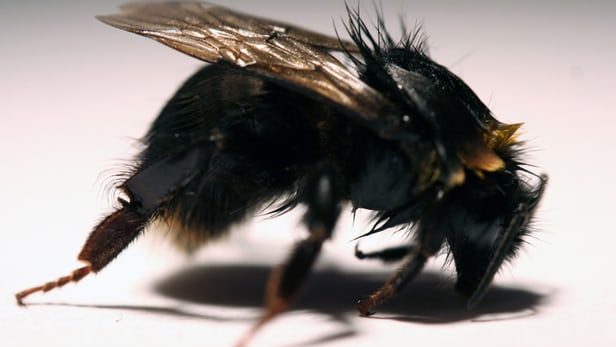Infrared light therapy may be the bee's knees

A bee exposed to a neonicotinoid pesticide, with bent front legs, withdrawn antenna, and matted fur causing loss of yellow coloration(Credit: University College London)
Neonicotinoid-type crop pesticides are not good for bees. They compromise the insects' production of ATP (adenosine triphosphate), a molecule that transports chemical energy within cells. As a result, bees lose mobility and ultimately starve, as they're unable to get out and forage for food. Fortunately for domesticated bees at least, there may be a solution – light therapy.
In a research project led by Prof. Glen Jeffery, a team from University College London studied four bee colonies each located in separate commercial hives. Two of those colonies were exposed to a neonicotinoid pesticide for 10 days, with one of those two also receiving a couple of 15-minute doses of near-infrared light every day during that same period. A third colony was left alone, to serve as a control.
After the 10 days were up, the poisoned/non-lit bees experienced decreased ATP levels, less mobility and correspondingly lower survival rates. By contrast, the poisoned bees that were exposed to the light showed no decrease in mobility or survival, faring just as well as bees from the control group.
While timer-controlled lights installed in hives could be a good ongoing preventative measure, it was also found that bees harmed by neonicotinoids could be brought back to health if light therapy were administered within two days of exposure.
"When a nerve cell is using more energy than other cells, or is challenged because of a lack of energy, red light therapy can give it a boost by improving mitochondrial function," says Jeffery. "Essentially, it recharges the cell's batteries."
But what about the fourth hive? The bees in it received the light therapy without the pesticide, and experienced a survival rate even higher than that of the control group. There appeared to be no change in their behaviour.
A paper on the research was recently published in the journal PLOS ONE.
Source: University College London
